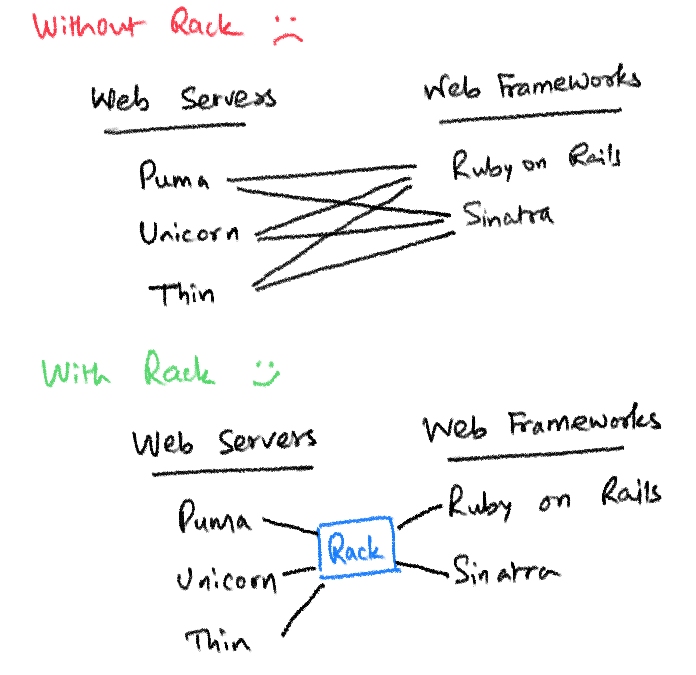You’ve been around in the Rails world for a while. You know your way around rails. But you keep hearing the word ‘Rack’ and don’t really understand what it is or what it does for you.
You try to read the documentation on the Rack Github repository or the Rails on Rack guides, but the only thing it does is add to the confusion. Everyone keeps saying that it provides a minimal, modular, and adaptable interface for building web applications. But what the heck does that really mean?
If there’s a list of topics that confuses most new Rails developers, Rack is definitely up there at the top. When I started learning Ruby and Rails last year, Rack took a really long time to wrap my head around. If you are in the same boat, fear not. In this article, I will try to explain pretty much everything that you need to know about Rack as a Ruby and Rails developer.
What is Rack?
In simple terms, Rack allows application frameworks & web servers to communicate with each other, and replace each without changing the other. It provides a common protocol (or interface, or specification) that different web servers can use to talk to different web applications, without worrying about the internals of each.
The Problem: Before Rack came along, each framework had to understand each other web server’s API to communicate with it.
The Solution: With Rack, the creators of web servers and web frameworks all agreed to talk to each other using a standardized way to reduce the efforts involved with communicating with different standards.
If you are building the next high-performant web server or application framework, you can talk with any other rack-compliant web application or web server as long as you follow the Rack specification.
This is pretty useful. Now let’s learn some theory.
